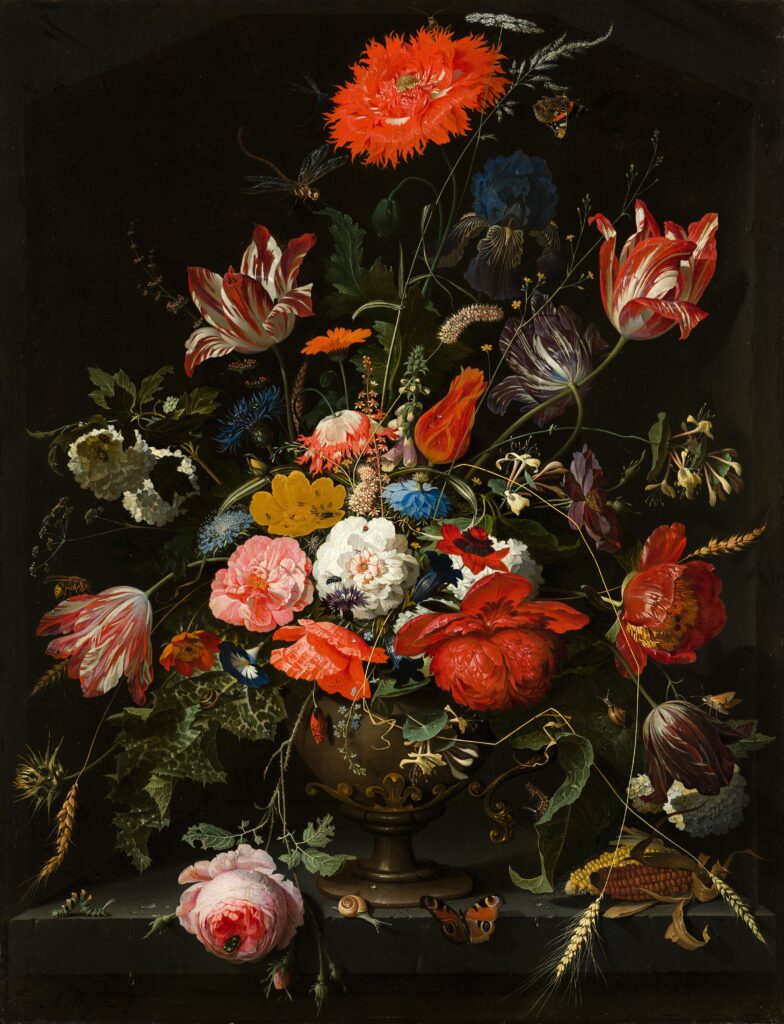The National Gallery of Art has recently received a significant gift of 27 box constructions and collages by the renowned artist Joseph Cornell. Cornell, known for his unique and intricate Victorian-era shadow boxes, has become a central figure in 20th-century art. The gift, generously provided by collectors Robert and Aimee Lehrman, adds a substantial collection of Cornell’s work to the museum. Despite never having visited Washington, D.C., the city in which the National Gallery of Art resides, Cornell’s remarkable pieces will now find a home there, providing a new audience with the opportunity to appreciate the artist’s imaginative and poetic arrangements.

Introduction
The National Gallery of Art recently received a significant gift of Joseph Cornell boxes, adding to its collection of this renowned artist’s works. This acquisition is a major milestone for the museum and highlights the importance of Cornell’s contributions to 20th-century art. The gift, made by collectors Robert and Aimee Lehrman, showcases their deep appreciation for Cornell’s unique artistic vision and his ability to transform ordinary objects into captivating and evocative pieces.
Background of Joseph Cornell
Joseph Cornell, a homebody-artist, was known for his intricate assemblages using Victorian-era shadow boxes. Born in 1903, Cornell spent his entire life in his house on Utopia Parkway in Queens, New York. Despite never traveling extensively, his art found a way to transcend boundaries and captivate viewers. Cornell’s creative process took place in his basement workshop, where he skillfully combined cork balls, paper cutouts of birds, and other inexpensive materials to create poetic arrangements inspired by elements of French Surrealism.

Description of Joseph Cornell’s Artwork
Medium and Style
Cornell’s preferred medium was the shadow box, a popular Victorian-era art form. These boxes, often lined with velvet and containing compartments, allowed Cornell to create intricate compositions by arranging found objects, images, and personal mementos. His art blended elements of collage, sculpture, and assemblage, creating a unique visual experience for viewers.
Influence of French Surrealism
Cornell drew inspiration from the French Surrealist movement, particularly the works of artists like Max Ernst and Marcel Duchamp. He incorporated elements of chance, juxtaposition, and dreamlike imagery into his compositions, creating a sense of mystery and poetic allure. His ability to transform ordinary objects into portals of imagination and escape set him apart as a master of his craft.
Themes and Motifs
Throughout his career, Cornell explored various themes and motifs in his artwork. Common themes included nostalgia, childhood innocence, and the power of imagination. Birds, celestial bodies, and actresses from the Golden Age of Hollywood were recurring motifs in his work. These elements combined to create a sense of longing and fantastical escape within each composition.
Unique Techniques
Cornell employed several unique techniques in his artwork, such as using glass to create depth and reflection within the boxes. He often used dials to create playful interactions and movable elements in his compositions, allowing viewers to engage with the artwork on a tactile level. These techniques added layers of complexity and intrigue to his pieces, further enhancing their allure.
Significance in 20th Century Art
Joseph Cornell’s artwork occupies a pivotal role in 20th-century art history. His innovative use of found objects, his exploration of Surrealist themes, and his ability to create poetic narratives within his compositions were groundbreaking at the time and continue to inspire artists today. Cornell’s work challenged traditional notions of art, expanding the possibilities of what art could be and how it could be experienced.
The National Gallery of Art’s Acquisition
The National Gallery of Art’s acquisition of a significant number of Joseph Cornell boxes and collages is a momentous occasion for the museum. The gift includes approximately 27 boxes and collages from various stages of Cornell’s career, providing a comprehensive representation of his artistic development and creative vision. This acquisition greatly enhances the gallery’s collection of Cornell’s work and solidifies its commitment to preserving and showcasing important contributions to 20th-century art.
Number of Boxes and Collages
The gift consists of approximately 27 boxes and collages, offering a substantial representation of Cornell’s body of work. Each piece provides a glimpse into Cornell’s artistic evolution and allows viewers to appreciate the nuances and intricacies of his art.
Career Span Covered
The acquired boxes and collages span various stages of Cornell’s career, providing insight into his creative development over time. From his early experimenting with assemblage and collage techniques to his later exploration of more complex compositions, the collection at the National Gallery of Art offers a comprehensive overview of Cornell’s artistic journey.
Impact on the Gallery’s Collection
The acquisition of Joseph Cornell’s boxes and collages significantly enriches the National Gallery of Art’s collection. These works add depth and diversity to the museum’s holdings, ensuring that visitors have the opportunity to engage with Cornell’s unique artistic vision. Additionally, the acquisition further cements the museum’s reputation as a leading institution for modern and contemporary art.

The Gift from Robert and Aimee Lehrman
The generous gift of Joseph Cornell boxes and collages to the National Gallery of Art comes from collectors Robert and Aimee Lehrman. Their dedication to Cornell’s artwork is evident in their extensive collection, and this donation serves as a testament to their appreciation for his artistic contributions.
Background of Robert and Aimee Lehrman
Robert Lehrman, a trustee of the Hirshhorn Museum and a grandson of the co-founder of Giant Foods, and his wife, Aimee Lehrman, have long been avid collectors of Cornell’s work. Their passion for art and commitment to supporting the arts are evident in their enthusiastic patronage of various cultural institutions.
Robert Lehrman’s Connection to Joseph Cornell
Robert Lehrman’s interest in Joseph Cornell began in the early 1980s when he purchased his first piece, a white dovecote box. This initial acquisition sparked a lifelong fascination with Cornell’s art, leading Lehrman to deepen his knowledge of the artist’s work through research and personal connections within the art world.
Reasons for Donating
The Lehrmans’ decision to donate their collection to the National Gallery of Art stems from their desire to share Cornell’s remarkable artistry with a wider audience. They recognize the importance of public access to art and have chosen to entrust the National Gallery of Art with preserving and exhibiting their collection for the benefit of future generations.
Significance of the Gift
The gift of Joseph Cornell boxes and collages from the Lehrmans to the National Gallery of Art is a momentous contribution to the museum’s collection. It not only showcases the Lehrmans’ deep appreciation for Cornell’s art but also signifies the lasting impact and influence of Cornell’s work within the art world.
Other Contributions by the Lehrmans
The donation of the Joseph Cornell collection is not the Lehrmans’ first contribution to the art world. They have made significant donations to various cultural institutions over the years, demonstrating their commitment to supporting and promoting the arts. Their philanthropy has had a lasting impact on the art community and continues to be recognized and appreciated.
Recognition of Joseph Cornell’s Work
Joseph Cornell’s art has received widespread recognition for its innovative approach and contribution to the artistic landscape. Throughout his lifetime and beyond, Cornell’s work has garnered critical acclaim and has been exhibited in prestigious museums and galleries worldwide.
Importance in Art History
Joseph Cornell’s art occupies a significant place in art history. His innovative use of everyday objects, his exploration of Surrealist themes, and his ability to create poignant narratives within his compositions have had a lasting impact on the development of modern and contemporary art. Cornell’s work challenged traditional notions of art, inspiring future generations of artists to push the boundaries of their practice.
Critical Reception
Cornell’s art has been celebrated by critics for its poetic beauty and unique aesthetic. His ability to transform ordinary materials into extraordinary works of art has been praised for its ability to evoke emotion and transport viewers to otherworldly realms. Critics have also remarked on the timeless quality of Cornell’s work, recognizing its enduring relevance and continued resonance with audiences.
Museum Acquisitions
Joseph Cornell’s artwork has been acquired by renowned museums around the world, solidifying his place in the canon of modern art. Institutions such as the Museum of Modern Art, the Art Institute of Chicago, and the Tate Modern are among the prestigious establishments that house Cornell’s work in their permanent collections. These acquisitions not only validate Cornell’s artistic achievements but also ensure that his art remains accessible to the public.
Previous Exhibitions and Retrospectives
Cornell’s art has been the subject of numerous exhibitions and retrospectives, further cementing his status as a significant figure in the art world. These exhibitions have provided an opportunity for viewers to engage with Cornell’s artistry, deepening their understanding of his unique creative process and the themes that permeate his work. His solo exhibitions have captivated audiences and showcased the breadth and depth of his artistic vision.
Implications for the National Gallery of Art
The acquisition of Joseph Cornell boxes and collages has significant implications for the National Gallery of Art. Not only does it enhance the museum’s collection, but it also opens up new opportunities for educational and research initiatives and strengthens the gallery’s relationships within the art world.
Enhancement of the Collection
The addition of a substantial number of Joseph Cornell boxes and collages enhances the National Gallery of Art’s collection, offering visitors a comprehensive experience of Cornell’s artistic evolution. This expansion contributes to the museum’s commitment to preserving and sharing important works of modern and contemporary art, ensuring that Cornell’s art is accessible to a wider audience.
Attracting Visitors
The acquisition of Joseph Cornell’s work is expected to attract visitors to the National Gallery of Art. Cornell’s unique artistic vision and the allure of his intricate compositions have the potential to captivate audiences and generate interest in the museum. The exhibition and display of these works provide an opportunity for visitors to engage with Cornell’s art on a personal and emotional level.
Educational and Research Opportunities
The presence of Joseph Cornell’s artwork at the National Gallery of Art opens up new avenues for educational and research endeavors. Scholars, students, and art enthusiasts now have the opportunity to study Cornell’s techniques, themes, and impact in greater detail. The accessibility of Cornell’s work within the museum’s collection facilitates academic exploration and advances understanding of his contributions to the art world.
Collaborations and Partnerships
The acquisition of Cornell’s artwork can also lead to collaborations and partnerships with other cultural institutions. The National Gallery of Art may explore opportunities to loan these artworks to other museums, participate in collaborative exhibitions, or engage in joint research projects. By leveraging these connections, the museum can expand its reach and share Cornell’s artistry with an even broader audience.
Impact on the Art World
The acquisition of Joseph Cornell boxes and collages by the National Gallery of Art is expected to have a significant impact on the art world. Cornell’s art continues to captivate audiences, and the increased visibility provided by the museum’s acquisition will further heighten interest in his work.
Increased Attention to Joseph Cornell
The National Gallery of Art’s acquisition of Joseph Cornell’s artwork is expected to generate increased attention and appreciation for his artistic contributions. Through exhibitions, publications, and educational programs, the museum can raise awareness of Cornell’s transformative works and inspire a new generation of artists and art enthusiasts.
Market Value and Art Market Impact
The acquisition of Cornell’s artwork by a prestigious institution like the National Gallery of Art is likely to have an impact on the art market. The increased recognition and validation of his work may result in heightened market value for his pieces, attracting the attention of collectors and investors. This heightened demand can shape the art market landscape, influencing trends and values within the industry.
Influence on Contemporary Artists
Joseph Cornell’s artistry continues to inspire contemporary artists working across various mediums. His innovative use of found objects, his exploration of Surrealist themes, and his ability to create narratives within his compositions have had a lasting impact on the art world. The National Gallery of Art’s acquisition of Cornell’s work ensures that his artistic legacy is preserved and continues to influence artists today.
Future Exhibitions and Displays
The National Gallery of Art plans to feature Joseph Cornell’s boxes and collages in future exhibitions and displays. These exhibitions provide an opportunity for visitors to immerse themselves in Cornell’s artistic world and experience the captivating narratives and imaginative compositions that define his artistry. By showcasing Cornell’s work, the museum contributes to a deeper understanding and appreciation of his contributions to the art world.
Conclusion
The National Gallery of Art’s acquisition of a significant gift of Joseph Cornell boxes and collages is a testament to the enduring legacy and importance of this renowned artist. The addition of these works to the museum’s collection enriches its holdings and allows visitors to engage with Cornell’s unique artistic vision. The gift from Robert and Aimee Lehrman showcases their deep appreciation for Cornell’s art and ensures that his contributions to 20th-century art will continue to be recognized and celebrated. The acquisition also has significant implications for the art world, attracting attention to Cornell’s art, enhancing market value, and inspiring future generations of artists. As the National Gallery of Art plans for future exhibitions and collaborations, it continues to promote Cornell’s remarkable artistry and his lasting impact on the art world.

